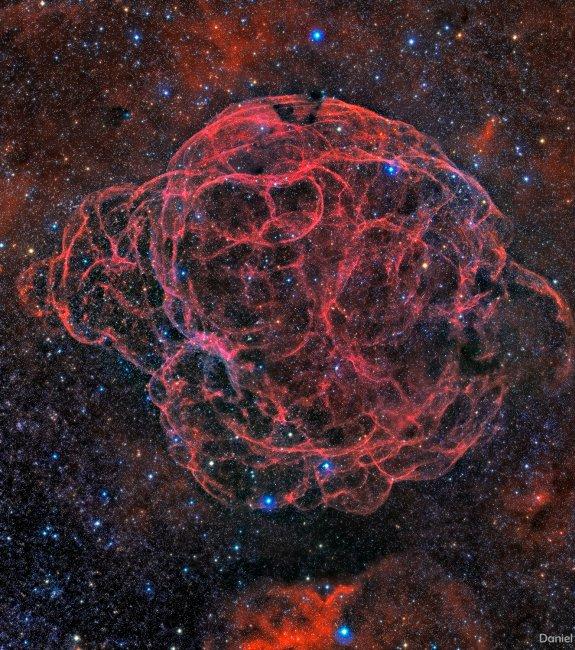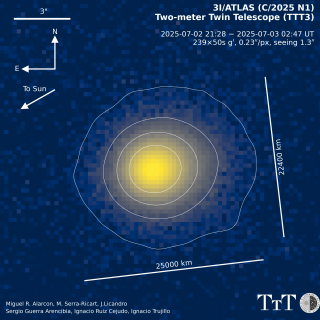Massive stars die a spectacular death. The remnant of the Supernova Simeis 147 (also known as Sharpless 2-240 and by the popular name of the Spaghetti Nebula) is situated on the sky between the constellations of Taurus and Auriga. The image was obtained with the “Fotomatón Cósmico”, a remotely controlled astrograph, belonging to the Unit for Communication and Scientific Culture (UC3) of the IAC, which is at the Teide Observatory (Izaña, Tenerife). This image was taken in the framework of the project “NIÉPCE, from the negative to the positive” which pays tribute to Photography.
The angular size on the sky of this supernova remnant is spectacular. If it could be seen with the naked eye it would cover 4 degrees at its greatest diameter, the equivalent of eight Moons lined up side to side. Inside the remnant, though not at its geometrical centre, we find the pulsar PSR J0538+2817, the core of the massive star, which is very dense and rotates very quickly.
There are two estimates of the distance to this nebula. The first puts it some 880 parsec (2,870 light years) away from the Earth, which would mean that Simeis 147 occupies a spherical volume with a diameter between 140 and 200 light years. If we consider that the distance to the nearest star, Proxima Centauri, is only 4.2 light years, we can imagine the huge dimensions of this astronomical object.
This object is expanding at a velocity of around 100 km/sec and appears to have sufficient energy to emit radiation which includes gamma rays, as measured by the Fermi satellite.
The other distance estimate is bigger, and is based on a measurement of the distance of the PULSAR J0538+2817 as 1.3 kiloparsec (4,240 light years). Recent studies suggest that the massive star which exploded had another, similarly massive, companion star. When it exploded the change in the gravitational configuration caused both objects to be expelled as high speed. The position of the pulsar does not coincide with the geometrical centre of the supernova remnant, which is displaced in the direction opposed to HD 37424, a giant star which had shared the central position some 30,000 years ago.
More information:
· APOD de la NASA: https://apod.nasa.gov/apod/ap170518.html




